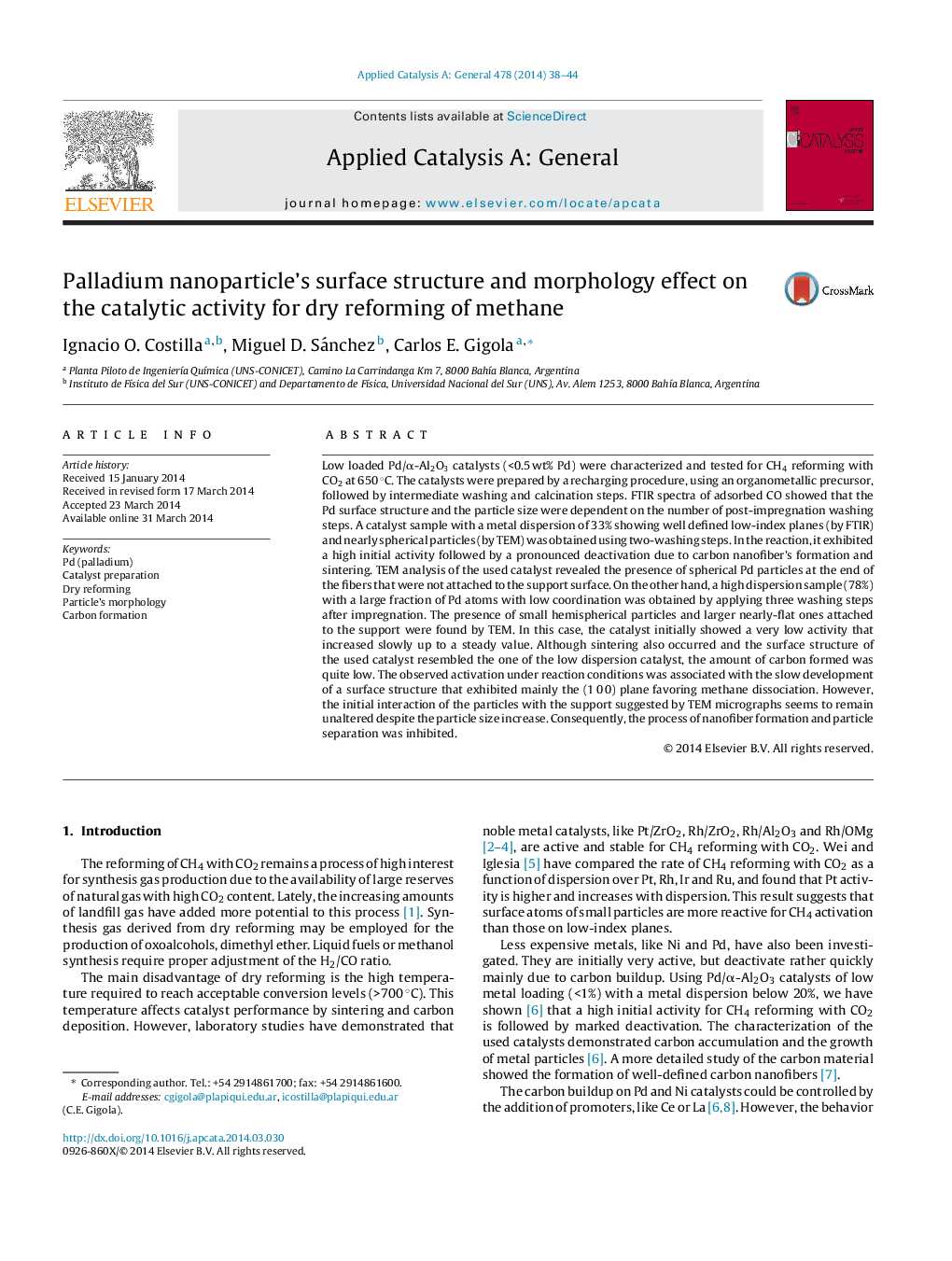| کد مقاله | کد نشریه | سال انتشار | مقاله انگلیسی | نسخه تمام متن |
|---|---|---|---|---|
| 39671 | 45831 | 2014 | 7 صفحه PDF | دانلود رایگان |
• Pd/α-Al2O3 catalysts of low loading were prepared and characterized by TEM and FTIR.
• Post-impregnation washing steps modifies the particle's structure and morphology.
• The development of the Pd(1 0 0) face is required for the CO2 reforming of CH4.
• Nearly spherical particles lead to carbon formation and deactivation.
• Hemispherical particles showed an activation process with limited formation of carbon.
Low loaded Pd/α-Al2O3 catalysts (<0.5 wt% Pd) were characterized and tested for CH4 reforming with CO2 at 650 °C. The catalysts were prepared by a recharging procedure, using an organometallic precursor, followed by intermediate washing and calcination steps. FTIR spectra of adsorbed CO showed that the Pd surface structure and the particle size were dependent on the number of post-impregnation washing steps. A catalyst sample with a metal dispersion of 33% showing well defined low-index planes (by FTIR) and nearly spherical particles (by TEM) was obtained using two-washing steps. In the reaction, it exhibited a high initial activity followed by a pronounced deactivation due to carbon nanofiber's formation and sintering. TEM analysis of the used catalyst revealed the presence of spherical Pd particles at the end of the fibers that were not attached to the support surface. On the other hand, a high dispersion sample (78%) with a large fraction of Pd atoms with low coordination was obtained by applying three washing steps after impregnation. The presence of small hemispherical particles and larger nearly-flat ones attached to the support were found by TEM. In this case, the catalyst initially showed a very low activity that increased slowly up to a steady value. Although sintering also occurred and the surface structure of the used catalyst resembled the one of the low dispersion catalyst, the amount of carbon formed was quite low. The observed activation under reaction conditions was associated with the slow development of a surface structure that exhibited mainly the (1 0 0) plane favoring methane dissociation. However, the initial interaction of the particles with the support suggested by TEM micrographs seems to remain unaltered despite the particle size increase. Consequently, the process of nanofiber formation and particle separation was inhibited.
Figure optionsDownload high-quality image (199 K)Download as PowerPoint slide
Journal: Applied Catalysis A: General - Volume 478, 20 May 2014, Pages 38–44
